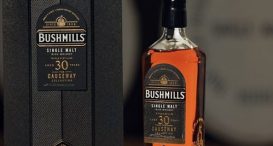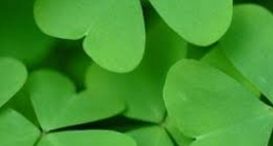Pricing in whisky, a few thoughts
let’s begin
More and more, and with every press release for supposedly new high quality limited edition releases packed with superlatives and little substance, I'm finding myself becoming disillusioned with how pricing in whisky works and how brands, especially the new ones, think it can be sustainable to charge astonishing amounts of money for average products.
For clarity, and for newer readers who do not know me well yet, my background is in branding, and specifically brand strategy. In practice this is the thinking behind the naming of a product, the packaging design, the storytelling and the way in which it is communicated.
That is to say that I know a thing or two about the process and it fills me with fear for the future of the category when I see brands with little about them, peddling young spirit or ‘founders membership schemes’ whereby punters are being asked to shell out good money for what will probably be something that does not become collectible, as you can rarely plan for this unless you’re very high end Japanese whiskies or you had foresight three decades ago to lay down a load of stock otherwise destined for blend fodder.
I started thinking about this more and more when I wondered what my son, currently 8.5 months old at time of writing, would be paying for something even moderately interesting when he is of legal drinking age.
We should all be open to trying the basics within whisky, none of us are above enjoying the value blends such as Grant’s Family Reserve, Johnnie Walker Red, Label 5, Chivas 12, Ballantine’s Finest as these are stunning whiskies for the cost and seriously easy drinking.
But we must also think premium, try premium and explore what this phenomenal drink has to offer. It was this thought that reminded me that when I was at Uni in Liverpool I used to get so much grief for drinking Budweiser, at £2.10 per pint back then, instead of Carling which everyone else drank at £1.60 per pint. I always saw the value in going for the slightly higher ABV, the bigger brand and the premium option, especially if that was 50p extra, although it annoyed people I was in rounds with greatly.
So when I looked through some of the whisky bottles in my collection that I’ve had for a decade or more, such as Suntory 17 Year Old (labelled Hibiki globally) which I bought in Tokyo in 2008 for £72 and now retails for up to treble that, and then thought about the drams I can buy now for that same amount of money I felt somewhat uneasy:
Obviously these are all good whiskies that I love for a variety of different reasons and have each of them in my collection, but are they premium, aged, medal-winning and utterly knockout like that Suntory 17 Year Old? I think the answer is no.
The inflated retail price of some of these recent releases are laid bare when they are then put into auctions, although why people put them up for sale before they have even sold out baffles me, and they often lose money as the market sees through the retailer RSP (recommended selling price).
So what will pricing in whisky bring in the coming years? Hopefully more good value drams such as the Glen Moray range; accessible, great tasting single malts, but, granted, their recent Glen Moray Mastery might be a touch out there vs. their traditional pricing strategy although it is a good drop.
In 17.25 years, I want my son to be able to buy a fantastic single malt, maybe even from his birth year, and not be having to pay through the roof for it.
There needs to be a bit more sensibility in the market’s pricing strategy to keep this recent, and glorious, snowballing boom in whisky sales globally going, otherwise people will move on to other drinks categories.
I’d love to hear your thoughts on the above and whisky pricing in general, please leave a comment below or on Facebook.















1 thought on “Pricing in whisky, a few thoughts”
Hi Greg,
I could not agree with you more on this one, but unfortunately the notion of ‘market forces’ is the ultimate driver of price, and when the likes of Diageo see their annual releases being flipped for large gains in a matter of days from release, you can see why they want a share in the spoils, hence the sizeable price rises from them in recent years.
The level of interest in purchasing whisky (for whatever reason) has also increased exponentially over the past few years, as evidenced by the considerable number of new distilleries either in planning or under construction currently, along with the number of whisky auction sites popping up all over the place, not to mention the ever increasing volumes passing through each, every month.
Another factor could also relate to the rise in demand outstripping supply, due to canny investment in whisky being viewed by many as an attractive alternative ‘savings account’, when interest rates attached to Bank and Building Society accounts have been so low, for so long, and thus a relatively ‘liquid market’ (please excuse the pun) for whisky is now readily available to everyone, via these burgeoning auction websites.
Additionally, there is the considerable negative consumer reaction to NAS bottlings, due to rapidly dwindling aged warehouse stocks, which gives the release of such older stocks with an age statement attached, a much greater perceived degree of attractiveness in the eyes of eager whisky buyers, to the extent that such releases from finite resources, gain almost a ‘must buy’ status, which the industry recognises, and tasks due advantage of.
Then there is the imponderable question about the influence on the market of the esoteric annual writings, and perceived wisdom, of the man in the Panama hat, whose prose seemingly has the power to potentially move markets!
The elephant in the room though is can this continue, have the forecasters prompting the growth in whisky production and online sales platforms got it right, or are we heading inexorably towards the next bust cycle in the history of the industry, and could the impact of NAS bottling be the catalyst for this?